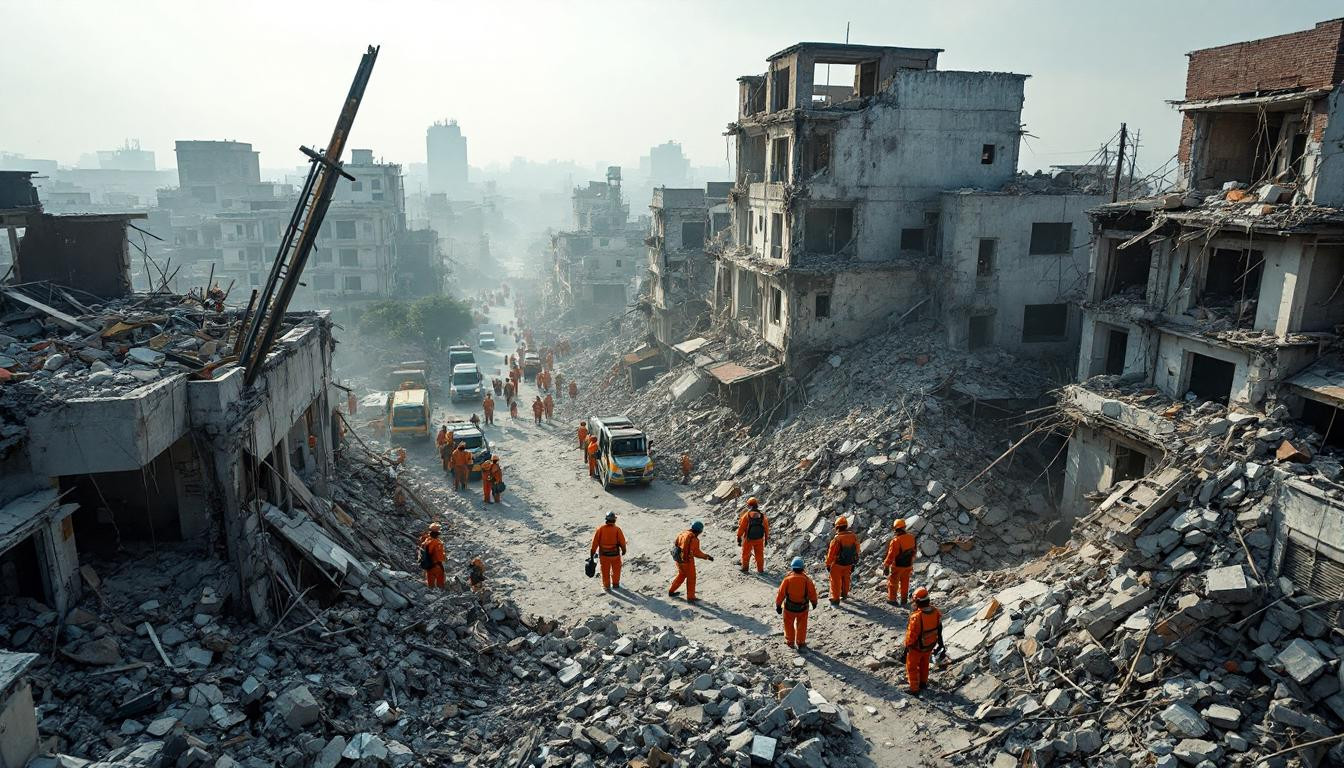The powerful 7.7 magnitude earthquake that struck Myanmar yesterday has caused devastating destruction across the region, with rescue efforts intensifying as the death toll continues to rise. As of today, March 29, 2025, nearly 700 people have been confirmed dead in what experts are calling the most significant seismic event to hit Southeast Asia this spring season.
The devastating impact: 694 lives lost and counting
The earthquake’s epicenter near Mandalay has left a trail of destruction throughout central Myanmar, with at least 694 fatalities reported in the country alone. The shallow depth of the quake—just 10 kilometers below the surface—amplified its destructive power, causing buildings to collapse and infrastructure to crumble across multiple regions.
“The combination of the earthquake’s size and very shallow depth maximized the chances of damage,” explains Professor Bill McGuire, Emeritus Professor of Geophysical & Climate Hazards at UCL. “Myanmar is one of the most seismically active countries in the world, so this quake is not a surprise.”
Cross-border devastation as Thailand feels the impact
The earthquake’s effects extended beyond Myanmar’s borders, with neighboring Thailand experiencing significant damage. At least 10 people died when a building collapsed in Bangkok, where witnesses described feeling the ground shake for a terrifying minute.
One Thai resident described how luxury hotel infinity pools transformed into waterfalls as the tremors hit, sending tourists scrambling for safety during what should have been a peaceful spring vacation.
Ongoing aftershocks complicate rescue efforts
Multiple aftershocks continue to rock the region, with the most significant being a 6.7 magnitude tremor that further destabilized already damaged structures. These continuous tremors have created what rescue workers describe as “a race against time,” where each aftershock potentially puts both survivors and rescuers at greater risk.
The earthquake struck like a predator stalking its prey—sudden, violent, and leaving destruction in its wake. Buildings that stood firm for decades crumbled like sandcastles against the ocean tide, a stark reminder of nature’s overwhelming power.
International aid mobilizes amid spring challenges
“Getting humanitarian relief into the worst-affected areas of Myanmar might not be politically easy,” warns Professor Ilan Kelman from UCL’s Institute for Risk and Disaster Reduction. “For disaster diplomacy to work, the world and the disaster-struck authorities must cooperate.”
India has already dispatched 15 tonnes of relief materials via the Indian Air Force, while other nations including the United States and European Union members have pledged assistance. These humanitarian efforts face additional challenges during the spring season, with forecasted rain threatening to further complicate rescue operations.
Critical infrastructure damage threatens further casualties
The earthquake has severely impacted essential infrastructure across Myanmar:
- Roads and bridges have collapsed, isolating remote communities
- A major dam burst, causing flooding in surrounding areas
- Historical and cultural sites suffered significant damage
- Hospitals are overwhelmed with injured survivors
Witness accounts reveal the human impact
Eyewitness accounts from both Myanmar and Thailand paint a picture of sheer terror as the earthquake struck. While the tsunami warning for Thailand’s spring shores has been lifted, the psychological impact remains for millions who experienced the violent shaking.
The timing of the disaster, during what should be a celebratory spring season in the region, has only amplified the tragedy. Many tourists who had traveled to experience Bangkok’s vibrant spring atmosphere now find themselves witnessing unprecedented devastation.
What happens next for the affected regions?
As rescue operations continue through the night, the focus will soon shift to recovery and rebuilding. The spring season’s warmer weather may provide some relief for displaced survivors, but the scale of reconstruction needed will take years, not months.
Meanwhile, the earthquake has temporarily overshadowed other regional events, including the Bangkok Motor Show, which was scheduled to showcase emerging automotive technologies from across Asia.
